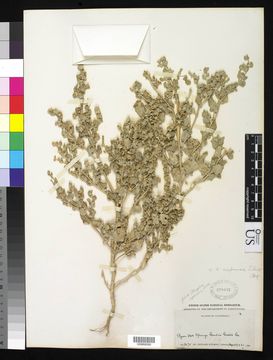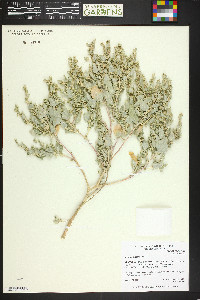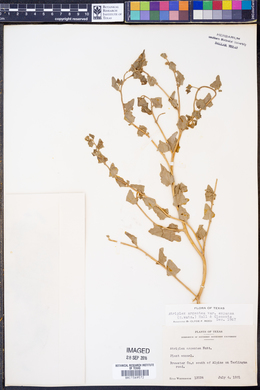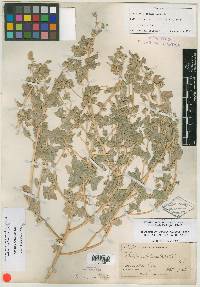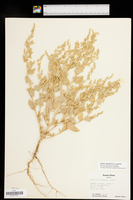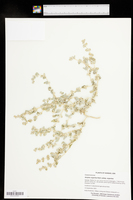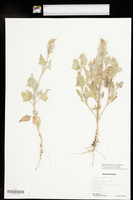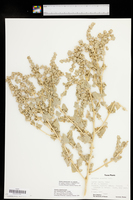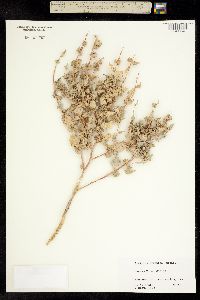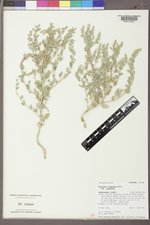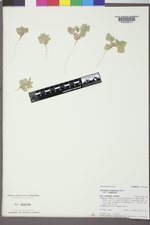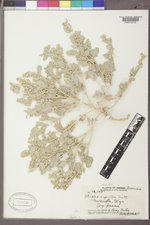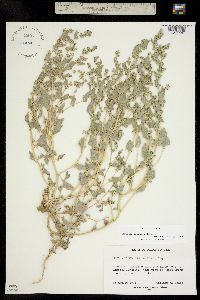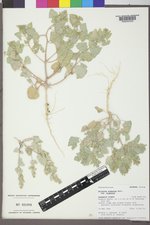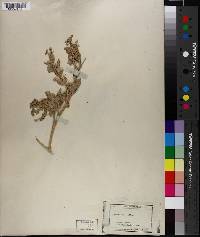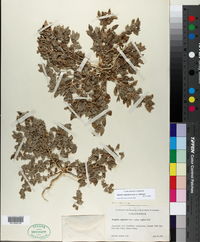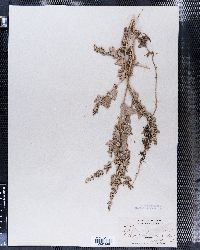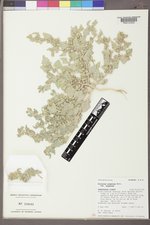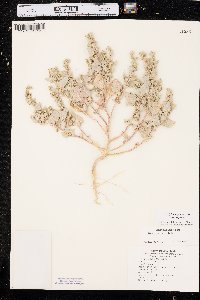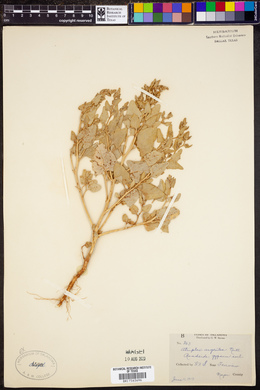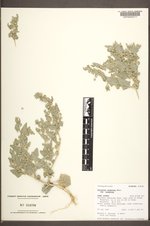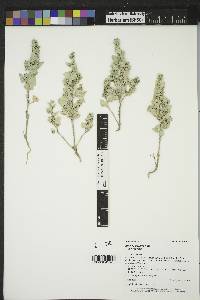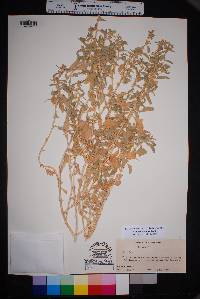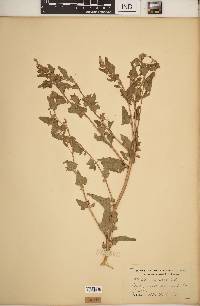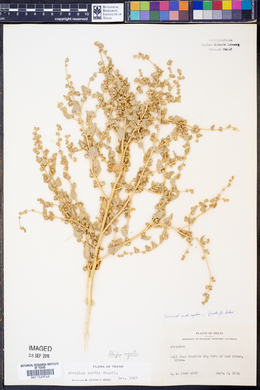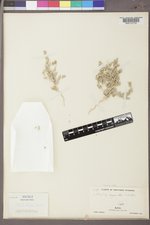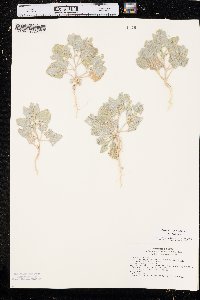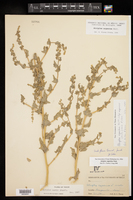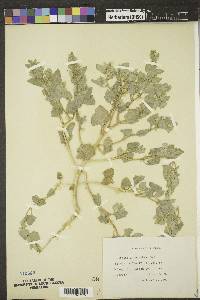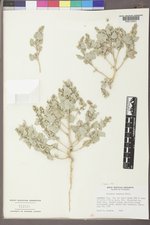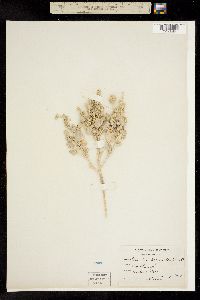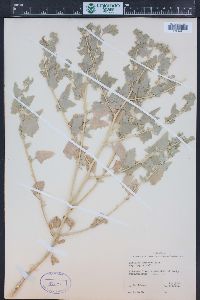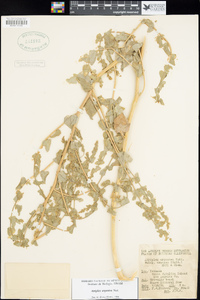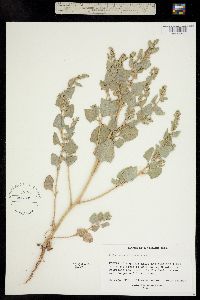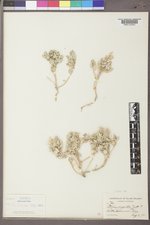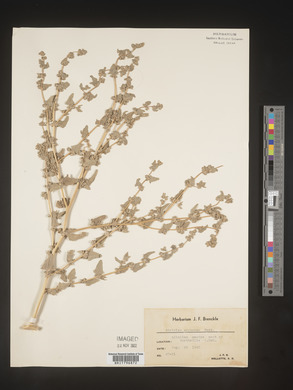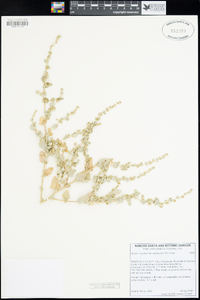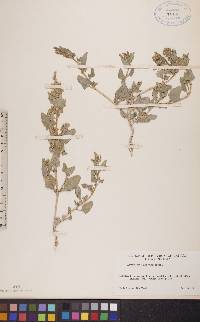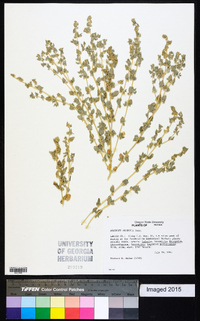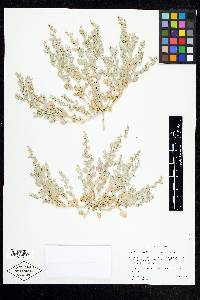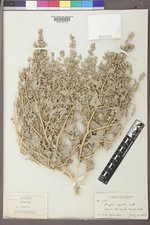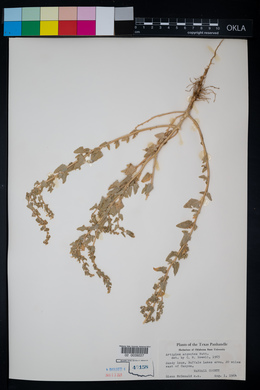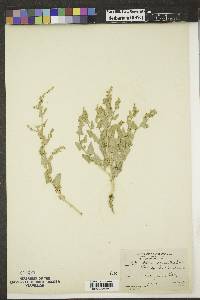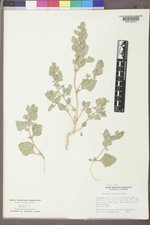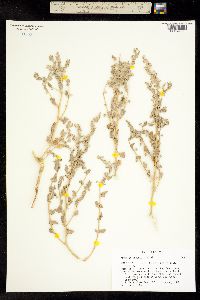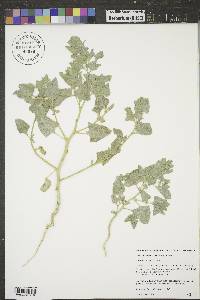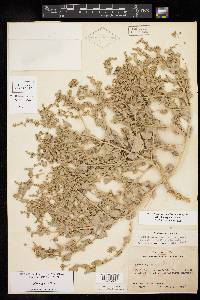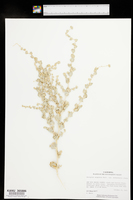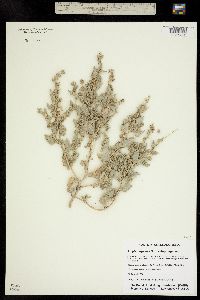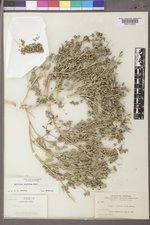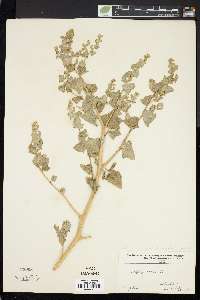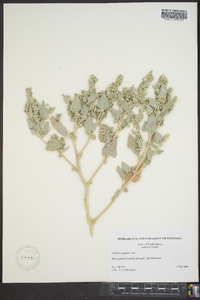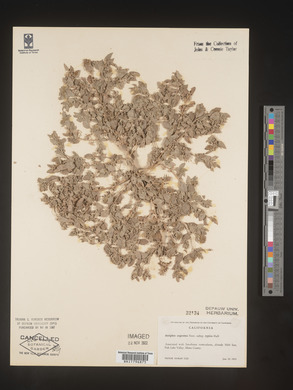
|
|
|
|
Family: Amaranthaceae
Silverscale, more...silverscale saltbush, silverscale saltweed
[Atriplex volutans A.Nelson, moreObione argentea (Nutt.) Moq.] |
Herbs, simple or freely branched, 0.5-6 dm; branches rather stout, angled, scurfy when young. Leaves often opposite proximally, petiolate or distal bracteate ones subsessile, blade lance-ovate, lanceolate, deltoid, or cordate, 5-75 × 4-50(-75) mm, base subhastate or obtuse to acute, margin entire or essentially so, sometimes closely repand-dentate, apex obtuse to acute or rounded, scurfy (glabrous). Flowers in axillary glomerules and terminal, interrupted spikes. Staminate flowers borne in distal axils, or in short dense spikes or panicles, or intermixed with pistillate, with 4-5-parted calyx. Fruiting bracteoles sessile, subsessile, or stipitate (stipe 0.5-5 mm), cuneate-orbicular, (2.5-)4-11.2 × 2-8.8 (-14 ) mm, margin foliaceous below apex, subentire or dentate to laciniate, face smooth, tuberculate, or crested, processes sometimes again toothed, teeth then aligned with axis of process. Seeds brown, 1.5-2 mm wide; radicle superior or lateral. 2n = 18, 36, 54. Herbarium materials have tended to represent a catchall for annual specimens not readily assignable to other taxa. Indeed, the distinguishing features of the Atriplex argentea complex are shared singly and often in combination with other taxa. Only by use of combinations of features can this taxon be defined. Those features, with much variation, center around the broad, typically ovate to deltoid leaf blades (often definitely 3-veined) and more-or-less compressed, sessile to subsessile (or short stipitate), fruiting bracteoles on which the marginal processes, or teeth, are mainly aligned with the plane compression, and with the faces quite smooth to variously appendaged. Still some specimens are apparently intermediate with other species, especially with the closely allied A. saccaria, with which it is at least partially sympatric.
Heil et al 2013, FNA 2004, Jepson revision 2, 2014 Duration: Annual Nativity: Native Lifeform: Forb/Herb General: Annual herbs, to 60 cm tall; stems stout and angled, unbranched or freely branching, scurfy when young. Leaves: Lower leaves opposite, on petioles; upper leaves often subsessile and alternate; blades broad, ovate to triangular, sometimes arrowhead-shaped, scurfy, often 3-veined, 0.5-6 cm long by 0.4-5 cm wide. Flowers: Inconspicuous and unisexual, with male and female flowers on the same plant; in axillary glomerules and terminal, interrupted spikes; staminate flowers with a 5-parted calyx, borne in distal axils, or in short dense spikes or panicles, or intermixed with pistillate flowers; pistillate flowers lacking a petals and sepals, with a naked pistil and 2 stigmas. Fruits: Fruiting bracteoles round with a tapered base, 4-10 mm long, more or less compressed, sessile or on short stalks, the margins herbaceous and subentire to dentate; enclosing a brown, 2 mm wide seed. Ecology: Found in desertscrub and floodplain communities, in dry or saline substrates, from 3,000-8,000 ft (914-2438 m); flowers summer-fall. Distribution: Western US and CAN, from Manitoba to British Columbia, south to CA, AZ, NM, TX, and n MEX. Notes: A common annual Atriplex of the Intermountain West. FNA recognizes 5 varieties, 3 of which may be found in our area. A. argentea var. argentea, found near four-corners and north through the Rocky Mountain states, has shorter plants less than 40 cm tall, triangular-ovate leaves, short-petiolate distal leaves, and alternate proximal leaves. A. argentea var rydbergii, also found near the four-corners, has elliptic to oval leaves, which attenuate to a cuneate base. A argentea var. mojavensis, found throughout the southwest from CA to w TX and w OK, has sessile distal leaves, opposite proximal leaves, and plants taller than 40 cm. FNA further comments about this variable taxon: "Herbarium materials have tended to represent a catchall for annual specimens not readily assignable to other taxa. Indeed, the distinguishing features of the Atriplex argentea complex are shared singly and often in combination with other taxa. Only by use of combinations of features can this taxon be defined. Those features, with much variation, center around the broad, typically ovate to deltoid leaf blades (often definitely 3-veined) and more-or-less compressed, sessile to subsessile (or short stipitate), fruiting bracteoles on which the marginal processes, or teeth, are mainly aligned with the plane compression, and with the faces quite smooth to variously appendaged. Still some specimens are apparently intermediate with other species, especially with the closely allied A. saccaria, with which it is at least partially sympatric." Traditionally placed in the goosefoot family (Chenopodiaceae), that entire family was recently lumped into Amaranthaceae. Ethnobotany: Used to treat sores, spider bites, and rashes; taken for pain and stomachaches; cooked and eaten as greens. Etymology: Atriplex is the ancient Latin name for this plant, derived from the plant's Greek name atraphaxes; argentea means silvery, referring to the color of the leaves. Editor: AHazelton 2015, AHazelton 2017 Much-branched herb to 8 dm, silvery-scurfy throughout; lvs lanceolate to ovate or deltoid, 1-3 cm, often as wide, fls axillary and in terminal spikes, the staminate and pistillate mingled or separate; fruiting bracteoles cuneate-rotund, 4-7 mm long and wide, united to beyond the middle, irregularly toothed across the broadly rounded summit, the central part indurate, the tubercles few or none, to 2 mm; radicle superior; 2n=36. Widespread in dry or alkaline soils in w. U.S. and adj. Can., occasionally intr. e. to Mich., Mo., and reputedly O. Gleason, Henry A. & Cronquist, Arthur J. 1991. Manual of vascular plants of northeastern United States and adjacent Canada. lxxv + 910 pp. ©The New York Botanical Garden. All rights reserved. Used by permission. |
This project was made possible in part by the Institute of Museum and Library Services [MG-70-19-0057-19].
Powered by Symbiota

